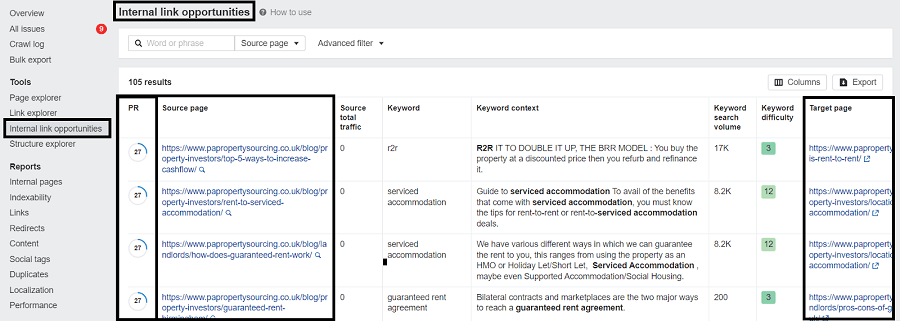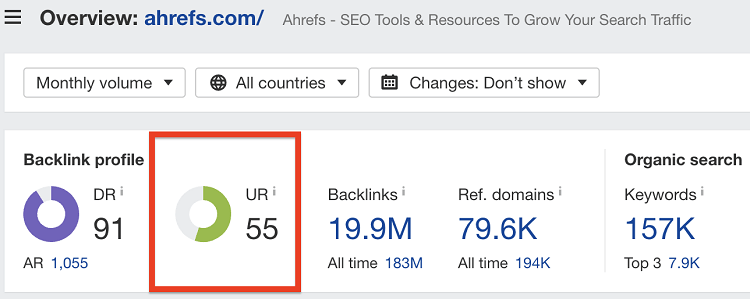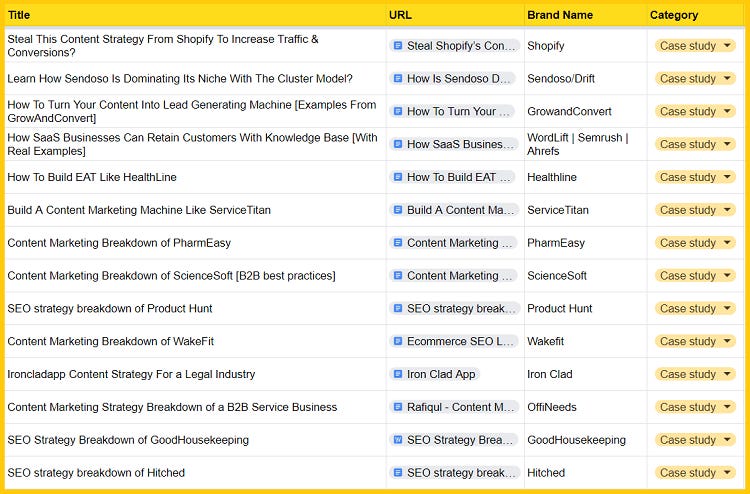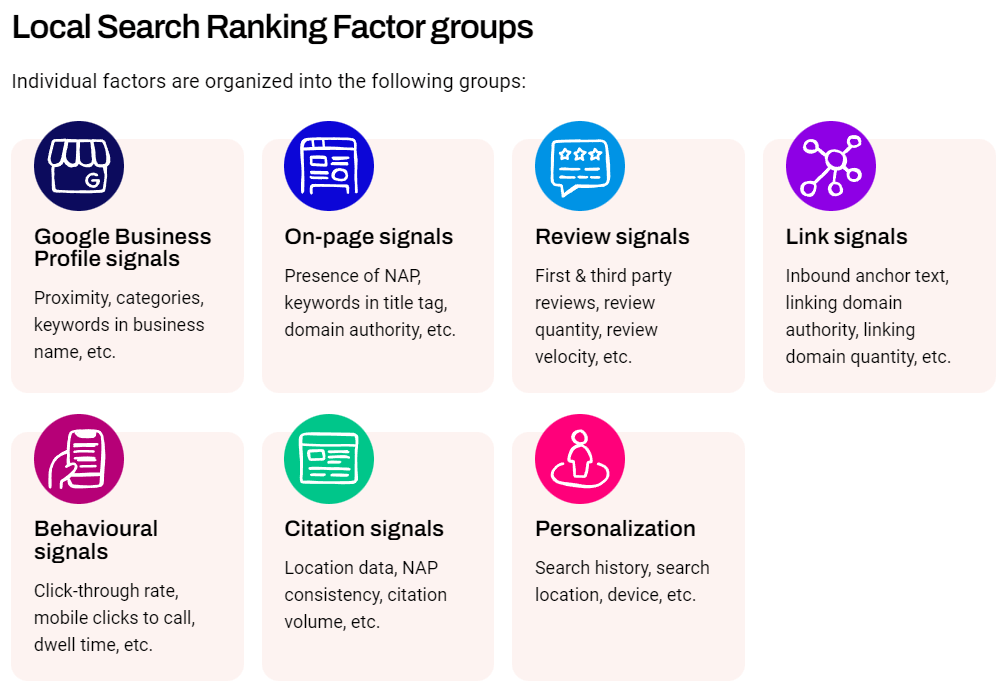#098 Content Marketing VIP Newsletter
6 minutes read with actionable SEO and content marketing insights.
🎯 Actionable insights
1. Content organization for SEO and improved UX
Most blogs fail at organizing their content inventory.
Displaying the latest 7-10 posts on the blog archive page creates some UX and SEO issues.
Users find it difficult to navigate older posts
Difficult to find content on a specific topic when the site covers multiple broad categories
Increases the crawl depth which buries your older posts under dozens of clicks.
Better approach?
Treat your blog archive page like an entrance to the library.
Take DIY.(com) as an example. This site covers broad topics like outdoor, kitchen, home & furnishing, and more.
Instead of highlighting the latest posts on the archive page, DIY.(com) chooses to organize its blog content by category and sub-categories.
We often see this type of category breakdown in eCommerce sites.
Check the below image to understand how they have created multiple categories.
In fact, if you click on any category, you’ll find articles categorized in sub-categories.
Improve site navigation for users
Crawlers can visit older posts quickly with less number of clicks
So, start organizing your content inventory for improved UX.
Insights from: Content Marketing VIP
2. Improve brand reputation with third-party brand reviews
Google evaluates brand reputation by looking at third-party reviews about a website/brand.
But the common mistake I see is publishing customer reviews only on the brand’s website.
Why it matters:
In the Quality Raters Guideline, raters are instructed to evaluate brand reputation based on third-party reviews published by individuals or organizations.
Simply put, having 100 positive customer reviews on GMB (or review sites) is more helpful for your brand reputation than publishing 100 reviews on your own website.
Action items:
Align your business strategy with SEO (educate your client and team members why it is important to have third-party reviews)
GMB is not the only place to have reviews (In fact, you can ask your customers to share brand reviews as a LinkedIn article)
Benefits?
This way, customer reviews published on individual sites (LinkedIn articles, personal site, forums, etc.) will rank for queries like:
[brand name] reviews
Is [brand name] trustworthy
This way, you can improve the reputation information and earn trust from Google and the target audience.
Insights from: Content Marketing VIP
3. Three internal linking opportunities
Here are three quick actionable (free) ways you can improve your internal linking strategy:
1/ Use Ahrefs internal link suggestions
Create a free Ahrefs webmaster account and get your website verified using Google Search Console.
Next, run a site crawl and check Ahrefs’s internal link opportunities report where you will find target and source pages with linking opportunities.
Here’s an example:
This way you can group relevant pages via internal links with descriptive link text.
2/ Optimize internal linking using page rating
In Ahrefs, you will find that every page has a specific URL Rating (UR).
Let’s first understand what UR is:
“It is measured on a logarithmic scale from 0 to 100, with the latter being the strongest. UR is somehow similar to Google’s PageRank.
Both internal and external backlinks links are taken into account when calculating URL Rating (although “weighted” differently).”
Why this matters:
Since UR is similar to PageRank, you can use this metric to optimize your low authoritative (low UR) pages by adding links to them from high UR pages.
Once you export the internal page list in a Google list, you will find pages with UR Ratings.
Next, optimize your low UR pages with internal links from high authoritative pages.
Action items:
Link from high PR pages to new or low PR pages (if both pages are topically relevant).
Acquire backlinks to low-UR pages
3/ Homepage’s link text
Generally, the homepage holds the maximum authority of the website. Therefore any links coming from the homepage add value to the linked pages.
This is why adding links to important services, product pages or high-converting landing pages from the Home Page can improve the overall search rankings.
However, ensure you’re using descriptive link text instead of generic text such as ‘know more,’ and ‘learn more.’
Insights from: Content Marketing VIP
⭐ Unlock SEO breakdowns of high-performing sites in search
When you join the Content Marketing VIP club, you'll unlock 30+ resources on:
SEO case studies
In-depth guides (EAT, Blog UX, Content briefs, etc.)
SEO audit
Frameworks and SOPs
You’ll also get access to new content going forward.
This should be expensive, right?
The content marketing VIP club has a yearly membership option which costs you only $27 annually. That means you'll spend around only ₹6 per day to reach the top category of SEOs.
If you're unsure whether this is right for you? DM over LinkedIn, and I'll help you decide (Don't worry, I'll never try to convince you to buy)
👉 Join Content Marketing VIP Club membership
4. How to find local keyword opportunities using GBP:
Go to your GBP and click the Performance button
Scroll down to the Searches Breakdown section
Click "See more" for the full list of keywords that you're ranking for
This is a great, under-utilized tool that helps you find optimization opportunities and generate content ideas for:
New service pages
Location page titles
GBP Q&A, Products, Posts, Description, etc.
When searchers see the term they are looking for all over your website and Profile, they will know that you provide what they need.
Insights from: Darren Shaw (Founder at Whitespark.ca)
💡 Helpful resources and tools
1. Product-led content marketing
If you're into content writing, managing content teams, and SEO, Dr fio D.'s guide on product-led content is a must to read.
Here’s how B2B and SaaS brands normally optimize their blog posts for conversions:
Add related product or service CTAs at the bottom of the page
Add image CTAs within the content
The challenge is that all of these CTAs are isolated from the main content of the page.
On the other side, the Product-led approach teaches you to create content where your product is an integral part of the solution.
Check out this guide and learn how to adopt a product-led content marketing approach with real examples.
Here’s the Video link for the same: Product-LED Content: A Powerful (& Under-utilized) Approach to Content - Dr Fio Dossetto
2. Local SEO ranking factors (checklist)
This 2023 local SEO survey is a great place to learn what’s working and what’s not to drive traffic and conversions from local SEO.
This survey result covers topics including:
Introduction & analysis
Local pack/finder ranking
Local organic ranking factors
Conversion factors
Local SEO myths
Negative ranking factors
Suspension risk factors
LSA ranking factors
How local SEOs are using AI
For example, here’s one of the key findings from the survey:
[Top 10 ranking factors as ranked by the contributors for their impact on local pack/finder rankings]
Primary GBP Category (score 193)
Keywords in GBP Business Title (score 181)
The proximity of the Address to the Point of Search (Searcher-Business Distance) (score 176)
Physical Address in City of Search (score 170)
Removal of spam listings through spam fighting (score143)
High Numerical Google Ratings (e.g. 4-5) (score 138)
Additional GBP Categories (score 134)
Quantity of Native Google Reviews (w/text) (score 128)
Verified GBP (score 117)
Proximity of Address to Centroid (score 114)
👉 Check out: 2023 Local Search Ranking Factors Report from Whitespark
😄 Have some fun
Everyone has an ace in the hole 😎













